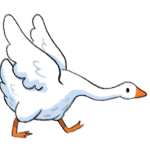Steam 설치
로그인
|
언어
简体中文(중국어 간체)
繁體中文(중국어 번체)
日本語(일본어)
ไทย(태국어)
Български(불가리아어)
Čeština(체코어)
Dansk(덴마크어)
Deutsch(독일어)
English(영어)
Español - España(스페인어 - 스페인)
Español - Latinoamérica(스페인어 - 중남미)
Ελληνικά(그리스어)
Français(프랑스어)
Italiano(이탈리아어)
Bahasa Indonesia(인도네시아어)
Magyar(헝가리어)
Nederlands(네덜란드어)
Norsk(노르웨이어)
Polski(폴란드어)
Português(포르투갈어 - 포르투갈)
Português - Brasil(포르투갈어 - 브라질)
Română(루마니아어)
Русский(러시아어)
Suomi(핀란드어)
Svenska(스웨덴어)
Türkçe(튀르키예어)
Tiếng Việt(베트남어)
Українська(우크라이나어)
번역 관련 문제 보고


 United States
United States 












































































While these kinds of stories are certainly fun to speculate about, in this case, it’s been entirely debunked.
Unlike other bird species, baby pigeons can remain in the nest for up to six weeks so by the time they fly the coop, they’re already nearly fully grown and look like an adult pigeon.
Look closely, though, and you might see that baby pigeons aren’t red around their eyes yet, like an adult pigeon.
That colour comes later, at around sexual maturity, which occurs between seven months and one year of age.